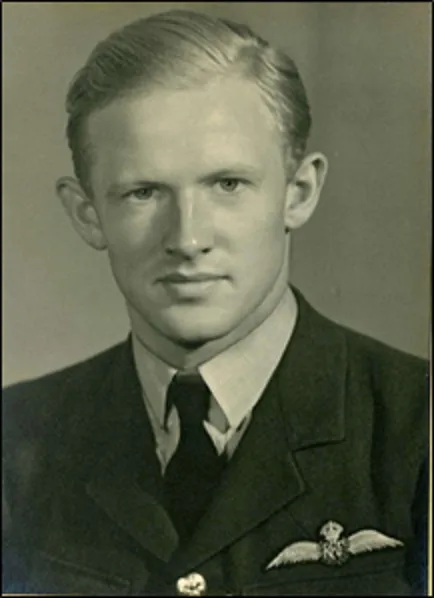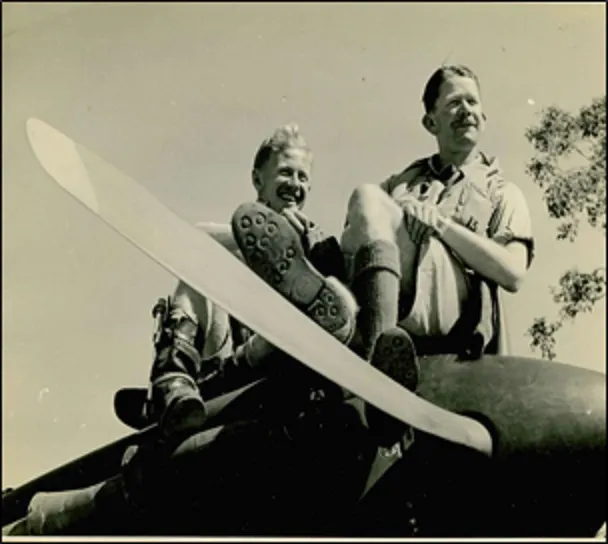FLTLT John Anthony Tuckson 100572



| Squadron/s | 54 SQN RAF |
| Rank On Discharge/Death | Flight Lieutenant (FLTLT) |
| Nickname | Tony |
| Mustering / Specialisation | Pilot |
| Date of Birth | 18 Jan 1921 |
| Date of Enlistment | 10 Jun 1940 |
| Date of Death | 24 Nov 1973 |
| Contributing Author/s | Margaret Tuckson Steve McGregor The Spitfire Association |
Tony was born on the 18th of January, 1921 at Port Said, Egypt. The second child of William Tuckson, a Suez Canal pilot and amateur artist, and his wife Eléonore, nee Pegler, Tuckson was educated in England at Gresham's School, Holt, Norfolk, Christ's College, Finchley, London, the Hornsey School of Art, London, and the Kingston School of Art.
Tony Tuckson served in the Royal Air Force from 10 June 1940 until 10 August 1946, training as a pilot at Edmonton, Canada. He then flew Spitfires with 54 Squadron over Britain and Europe, mainly in the skies over France. The Squadron was heavily engaged in the Battle of Britain until moving north to regroup prior to undertaking coastal patrols. In mid-1942, the Squadron left for Australia and joined the battle against the Japanese before disbanding in October 1945.
Tony was commissioned in 1941, and in August 1942 was sent to Darwin, Australia, but due to the new Spitfires being waylaid by Churchill to another theatre of war, the Squadron arrived in Melbourne sans aircraft.
His wife Margaret remembers the circumstances where she met the young handsome pilot in 1942. She said that two of the British pilots just off the ship were invited to her father's home at Warrawee and stayed with them until they could start their travels to Darwin. However, in the meantime it was shortly to be her 21st birthday and they all decided to do a bit of dancing and celebrate. The two pilots George and Harold knew of one of their mates who was a good dancer so he was invited but at the last minute telegrammed that he was delayed because of a pranged plane down in Wagga.
The two fellows then hunted around for a ring-in and decided that John Tuckson would do. Margaret remembers that after her 21st birthday her mother smilingly asked which of the British pilots she fancied, Margaret said, "Oh, Mum, the blond one called Tony".
She certainly liked the blond handsome pilot the best of all and to him his single days were fast drawing to a close. They ended up marrying and Tony as he was now called, in Australia (not Anthony) left his new bride and with his mates set off for Darwin to start flying the new Spitfires (or as they were called "Capstans").
In Darwin Tony and his Squadron saw action against the Japanese.
He was later a flying instructor in Wirraway aircraft and was demobilized from the RAF with the rank of flight lieutenant on the 10th of August 1946 in Sydney. Tuckson was appointed assistant director of the Art Gallery of New South Wales in October 1950, and deputy director in 1957. He visited Melville Island and Arnhem Land to collect work for the National Art Gallery. He mounted a touring exhibition of Aboriginal bark paintings, carvings, and other work, resulting in Berndt's book Australian Aboriginal Art (1964), and the major Melanesian Art exhibition in 1966. The nineteenth-century gallery was redesigned, largely Tuckson's achievement, as The Art Gallery of New South Wales (1972).
Tuckson admired the work of Picasso, Matisse, Klee and Cézanne, and in 1949 was greatly influenced by R. M. Berndt's collection of Aboriginal art from Arnhem Land.
He began exhibiting his own paintings with the Society of Artists and the Contemporary Art Society of Australia, but between 1954 and 1962, he exhibited only nine paintings.
Until 1958 he was a School of Paris painter of figures, heads, still lifes and interiors. However, his later paintings were abstracts, and he was quickly recognized as one of Australia's few superlative abstract expressionists. His work has been compared favourably with that of Jackson Pollock.
His first solo exhibition was at Watters Gallery in 1972, presenting 64 paintings, most from the period 1958 to 1965. A further exhibition of 22 new works took place in 1973. The Association of Galleries of New South Wales held a memorial exhibition of his work in 1976, an exhibition with the title Tuckson: Themes and Variations was mounted by Terence Maloon in Melbourne in 1989, and several of his paintings are now on permanent display at the National Gallery of Australia.
Tuckson married Dorothea Margaret Bisset (now Margaret Tuckson), a former design student, in Turramurra, Sydney, in 1943. They had one son. Both his wife and his son have appeared in some of his paintings.
After the Second World War, he studied in Australia at the East Sydney Technical College for three years, graduating in December 1949.
Tony has left a magnificent collection of pen and inks, pencil, ink with coloured washes and water colour paintings of his Squadron.
The Spitfire Association believes that this collection is unique and believes that such a unique record of his wartime mates should never be lost.
On the 24 November 1973 at Wahroonga, Australia), he died of cancer.
